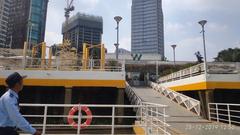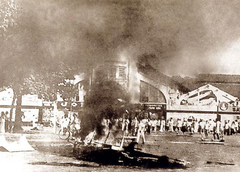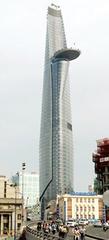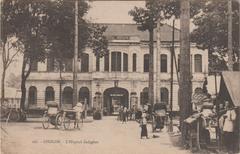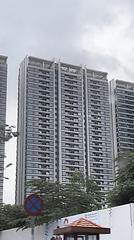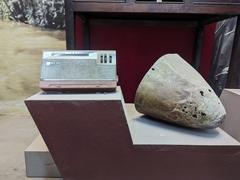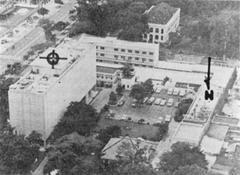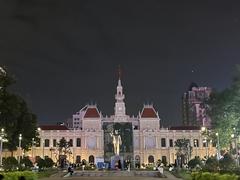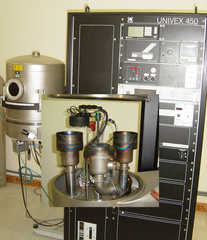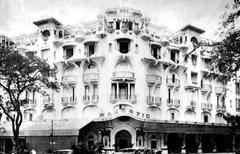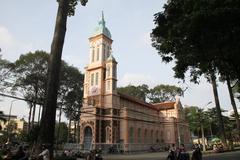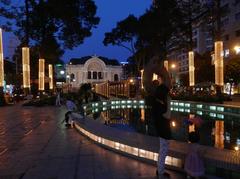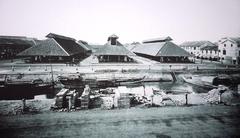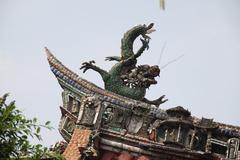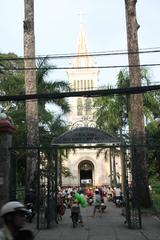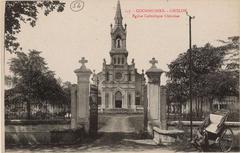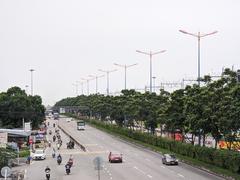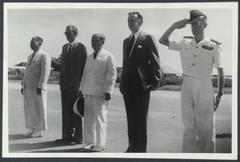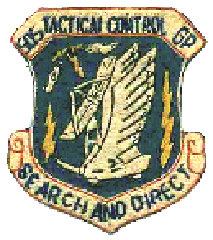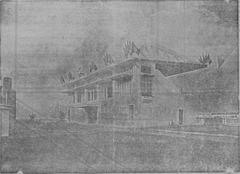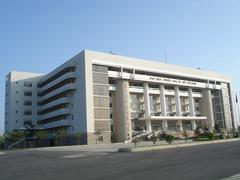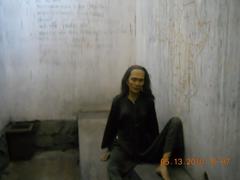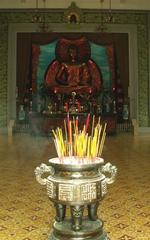
Visiting the Tomb of Lê Văn Duyệt in Ho Chi Minh City: Tickets, Hours, and Essential Tips
Date: 04/07/2025
Introduction
The Tomb of Lê Văn Duyệt, locally known as Lăng Ông Bà Chiểu, stands as one of Ho Chi Minh City’s most significant historical landmarks. Situated in the vibrant Bình Thạnh District, this revered site honors Lê Văn Duyệt (1763–1832), a legendary military commander and viceroy under the Nguyễn dynasty. His legacy of astute governance, religious tolerance, and social reform is enshrined not only in Vietnamese history but also in the enduring architecture and spiritual resonance of his tomb complex.
This comprehensive guide provides essential information for visitors—detailing historical context, architectural highlights, visiting hours, ticketing, accessibility, etiquette, and practical tips—ensuring a meaningful and well-prepared visit to this unique monument (Mytour.vn, Everything Explained Today, Trek Zone).
Table of Contents
- Historical Background
- Location and How to Get There
- Architectural Highlights and Site Layout
- Visiting Hours and Ticket Information
- Accessibility and Facilities
- Etiquette and Visitor Tips
- Best Times for Visiting
- Nearby Attractions
- FAQs
- Conclusion
- References
Historical Background
Lê Văn Duyệt (1763–1832) rose from humble origins in the Mekong Delta to become one of Vietnam’s most influential figures. As viceroy of Gia Định (present-day southern Vietnam), he was instrumental in consolidating Nguyễn rule, fostering regional prosperity, and promoting religious tolerance, notably towards the Catholic community. Though his legacy was once marred by political disputes, he is now honored as a unifier and a paragon of effective governance (Mytour.vn).
Following his death in 1832, a tomb complex was constructed to commemorate his contributions. The site has since undergone several restorations—most notably in 1948—preserving its traditional Nguyễn dynasty design and cultural significance.
Location and How to Get There
The Tomb of Lê Văn Duyệt is located at Đinh Tiên Hoàng Street, Ward 1, Bình Thạnh District, Ho Chi Minh City, approximately 3–5 kilometers from District 1 (Trek Zone, Travelfish).
Getting There:
- Taxi/Grab: Widely available and convenient from any central location.
- Public Transport: Several city bus routes stop near Đinh Tiên Hoàng or Phan Đăng Lưu streets.
- Walking/Bicycle: An enjoyable option for those staying nearby, allowing you to explore the lively Bình Thạnh neighborhood.
Architectural Highlights and Site Layout
The tomb complex reflects Nguyễn dynasty aesthetics and traditional Vietnamese symbolism. Visitors enter through the grand Tam Quan gateway, adorned with intricate carvings and symbolic motifs of dragons and phoenixes—emblems of power and prosperity (Evendo).
Key Features:
- Main Courtyard: Paved with stone, shaded by mature trees and lined with stone lanterns and incense burners.
- Central Worship Hall: Elevated wooden building with glazed tiled roofs, housing the main altar to Lê Văn Duyệt and his wife. Inside, ancestral tablets, calligraphic plaques, and paintings depict his life and achievements.
- Tomb Chamber: The side-by-side burial mounds of Lê Văn Duyệt and his wife, encircled by a stone wall and shaded by ancient trees.
- Ancillary Shrines: Smaller pavilions dedicated to notable mandarins and local spirits.
- Gardens: Meticulously maintained, featuring native plants, lotus ponds, and shaded rest areas, symbolizing harmony between humanity and nature (Touristlink).
Facilities: Restrooms, seating areas, and small vendors selling incense and offerings are available on-site.
Visiting Hours and Ticket Information
- Opening Hours: Daily from 7:00 AM to 5:00 PM (Atlas Obscura, Trip.com).
- Admission: Free of charge. Donations are welcome, especially during religious ceremonies (Travels Helper).
- Guided Tours: Available on request through local operators or at the site entrance, offering deeper historical and cultural insights (Vietnam Discovery).
Accessibility and Facilities
- Mobility: Pathways are mostly flat and wheelchair accessible, though some older structures may have steps or uneven paving.
- Restrooms: Basic facilities are present.
- Seating: Shaded benches throughout the gardens.
- Family-Friendly: The tranquil gardens are suitable for families with children.
Etiquette and Visitor Tips
- Dress Modestly: Cover shoulders and knees; avoid shorts and sleeveless tops (Vietnam Discovery).
- Respectful Conduct: Keep voices low, especially near altars and during ceremonies.
- Offerings: Incense and flowers are available for purchase and can be respectfully placed at the altars.
- Photography: Permitted outdoors; always seek permission before photographing inside worship halls or during rituals.
- Personal Belongings: Remain vigilant, especially during crowded festivals.
Best Times for Visiting
- Weekday Mornings: Quieter and more peaceful.
- Festival Periods: The death anniversary (30th day of the seventh lunar month) features major ceremonies and cultural performances.
- Weather: Early morning or late afternoon visits are ideal to avoid midday heat or rain (Lonely Planet).
Nearby Attractions
- Bà Chiểu Market: Bustling local market adjacent to the tomb.
- Jade Emperor Pagoda: 1 km away (Lonely Planet).
- Saigon Zoo and Botanical Gardens: 1.5 km, ideal for families (Trek Zone).
- Tân Định Church: 2 km, famous for its unique architecture.
- Museum of Vietnamese History: Close by, for a deeper dive into the country’s past.
Frequently Asked Questions (FAQ)
Q: What are the visiting hours for the Tomb of Lê Văn Duyệt?
A: Open daily from 7:00 AM to 5:00 PM.
Q: Is there an entrance fee?
A: Admission is free; donations are welcome.
Q: Are guided tours available?
A: Yes, through local operators or at the site.
Q: Is the site wheelchair accessible?
A: Yes, most main pathways are accessible, though some areas have steps.
Q: Can I take photos inside the tomb?
A: Yes, outdoors and in most areas; always ask before photographing inside shrines or during rituals.
Conclusion
The Tomb of Lê Văn Duyệt is a profound testament to Vietnam’s cultural heritage, historical resilience, and spiritual traditions. Its harmonious architecture, tranquil gardens, and rich historical context make it one of Ho Chi Minh City’s must-visit sites. With free admission, easy access, and proximity to other landmarks, the tomb offers an enriching experience for both casual visitors and history enthusiasts.
Plan your visit to immerse yourself in the legacy of Lê Văn Duyệt, and explore nearby attractions for a deeper understanding of Ho Chi Minh City’s diverse heritage. For updated information, audio guides, and travel tips, download the Audiala app and follow us on social media.
References
- Mytour.vn
- Everything Explained Today
- Trek Zone
- Very Ngon Homewares
- Vietnam Discovery
- Atlas Obscura
- Travels Helper
- Lonely Planet
- Touristlink
- Trip.com
- Saigon For 91 Days





